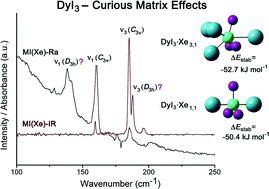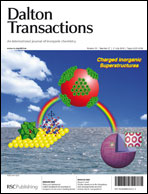The molecular and electronic structure of dysprosium triiodide, DyI3, and its dimer, Dy2I6, was determined by high level computations, gas-phase electron diffraction, and gas-phase infrared and matrix-isolation infrared and Raman spectroscopy. The free monomeric molecule is planar from all methods with an equilibrium bond length of 2.808(9) Å; the thermal average bond length from electron diffraction is 2.828(6) Å. The molecule forms complexes in the matrix-isolation experiments causing pyramidalisation of planar monomeric molecules. The likelihood of having both pyramidal and planar DyI3 molecules in the matrix is discussed in order to explain certain features of the spectra. Our computations suggest that the dimer geometry depends on the occupation of the partially filled 4f orbitals. As this is the third molecule in the dysprosium trihalide series studied, trends in their electronic and molecular structures are presented and discussed.
You have access to this article
 Please wait while we load your content...
Something went wrong. Try again?
Please wait while we load your content...
Something went wrong. Try again?


 Please wait while we load your content...
Please wait while we load your content...